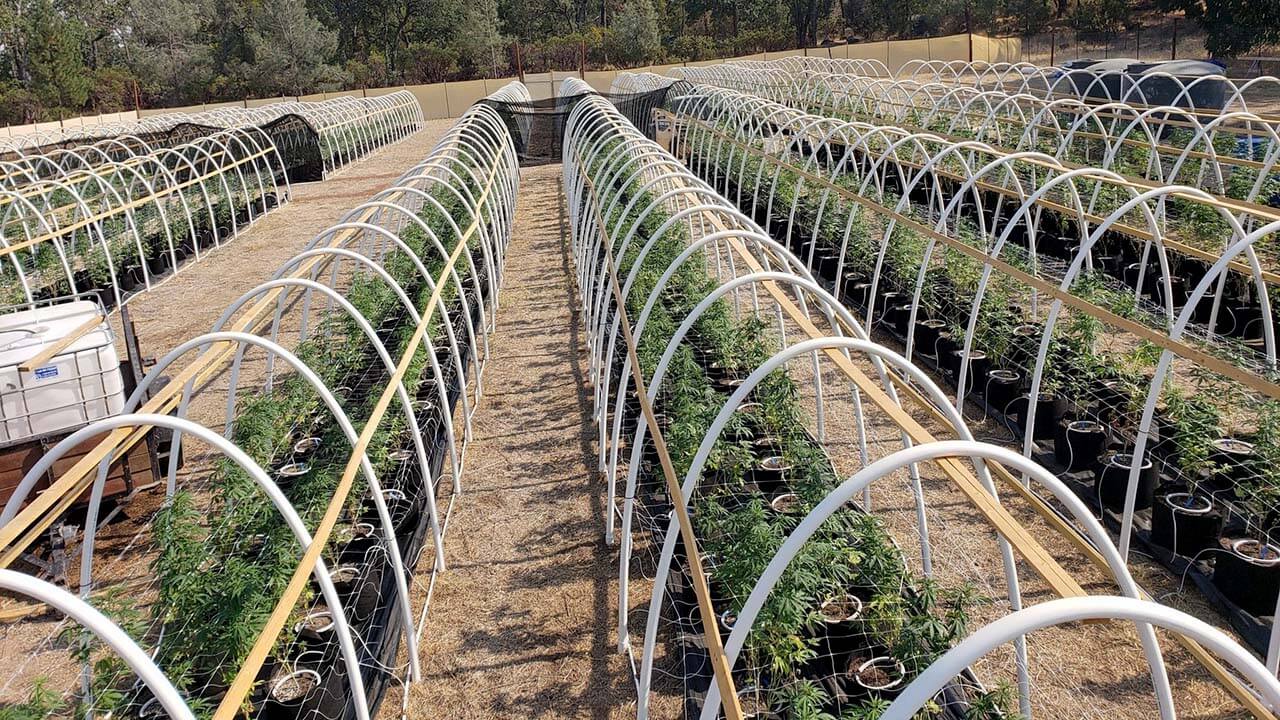(This story appears in the March issue of MJBizMagazine.)
Matthew Huron, the CEO of Colorado-based Good Chemistry Nurseries, bred his first original strains as head cultivator for Elmar Lins Compassionate Care Co-op, a San Francisco Bay Area cooperative he founded in 2000, after his father and his father’s partner were diagnosed with HIV/AIDS.
He named the strains after people dear to him, such as Elmar, his father’s partner; Geraldine, his mother; and Dorothy, his grandmother.
After his father died in 2009, Huron moved to Colorado and soon launched Good Chemistry Nurseries, a vertically integrated cannabis business where he is CEO. Despite including “nurseries” in Good Chemistry’s name, Huron and his cultivation team only dabbled in breeding and propagating cannabis plants for many years. Most of their time was devoted to growing, processing and running the marijuana retail business. They also entered a second state, Massachusetts, in 2019.
It wasn’t until about three years ago that Huron, at the behest of his cultivation director, Heath Byington, decided to create Good Chemistry’s own line of strains and resurrected the company’s breeding efforts in earnest. That included leasing an 18,000-square-foot building devoted exclusively to breeding.
“When you’re doing breeding, you’re dealing with pollen. And you can pollinate plants that you don’t want to pollinate. And then production rooms can end up having seeds and stuff, which is not really sought out by a consumer.
In essence, you can mess up your production,” Byington explained. Having a facility dedicated to breeding “was a huge step forward for us, because it takes a tremendous amount of time and space to get from Point A to Point B.”
The result of the effort is GC Uniques, a branded line of flower that Good Chemistry launched Dec. 15 with eight original strains, including 5280 Gravy, Capital Chills and Lift Ticket.
The company expects to release four more varieties in April and May and then another 10-15 during the second half of this year. Good Chemistry has another 25-30 strains “in the ground” that, if successful, should come to fruition in about two years.
Creating 5280 Gravy
Good Chemistry’s growers didn’t know 5280 Gravy was going to have that name when they began the breeding process, which started with the simple desire to cross two breeds they really liked.
“We have this really special cut of Gravy that we crossed with a phenomenal cut of White Mac, and we wanted to see what happened,” Byington explained.
To get the seeds, they took pollen from White Mac and pollinated Gravy, resulting in a “ton of seeds.”
Byington likes to pollinate plants between the third and fourth weeks of flowering, when the seeds are mature enough to receive male pollen.
About five to six weeks later, the team collects seeds when the plant is dried post-harvest. When the time is right, germinating those seeds will sprout new plants.
Some growers put a male plant in a room full of females and turn on a fan to blow pollen all over the space, pollinating every plant.
But Good Chemistry prefers a less messy and “more meticulous” method, Byington said. The company’s personnel don Tyvek suits before they enter a room with female plants. Once inside, they walk around with small vials of pollen, which are applied to female plant pistils using “little model-car paint brushes,” Byington said. Then the plants are tagged so the team can easily revisit pollination details.
Personnel leave the room through a dedicated one-way exit and remove the suits before going elsewhere in the facility.
“That way, there can’t be any accidental cross-contamination in any of the other rooms,” Byington said. “Pollen can get out very, very easily.
“Our breeding lab, where we are doing the pollinating, is completely separated on the other side of the building from the flower rooms where we’re growing all the different phenos and pheno hunting, because you could still pollinate one of those by accident. … That room in particular has its own HVAC system; it’s sealed off from everything else.”
Scouring for seeds
Female plants can produce thousands of seeds that appear in cannabis flower, so Good Chemistry developed a machine to separate the seeds from other plant material.
They take the ground, broken-up flower as well as seeds and stems and pour it through a funnel with a fan that separates seeds from other material.
Good Chemistry plant breeder Nick Fallon and his team look through the seeds to find the best, most mature ones, which typically present as larger, hard, brown and striped like watermelons. Mature seeds also feature a prominent straight line that cracks where the stem root pops out.
“That’s something that we’re always looking for,” Byington said. Immature seeds, meanwhile, are usually smaller, softer and pale or green.
“Once you have selected the best seeds, then you have to find the needle in the haystack,” Byington said. In other words: It’s time to conduct a pheno hunt.
The pheno hunt is on
In the case of 5280 Gravy, Byington and his team selected 157 seeds to grow and then discarded the males and less desirable females, whittling the number of plants to about 75. From those 75, they clipped clones to grow and selected the best 25 for another round of cloning and growing.
Good Chemistry typically keeps plants in the vegetation period for four to eight weeks, while their flowering period is eight to nine weeks.
That first round of breeding and growing – from germinating the seeds to harvesting and curing – usually takes about five months, Byington said.
The first pheno hunt is usually followed by at least two more, because the growers want to see consistency in multiple grow cycles. That quest for consistency involves testing for terpenes, potency, wet weight, dry weight and ease of processing – or lack of it – among other factors.
An important part of that quest is a so-called STATS team that Good Chemistry created to evaluate sight, touch, aroma, taste and sensation. The business grades all of its homegrown products on those traits.
“We’ll compare those notes from the first harvest to the second harvest to the third harvest,” Byington said. “You want to see consistency in the data. You want to see consistency in the field, where it’s growing.”
Byington stressed that the team must cultivate many losers before crowning a winner in the pheno hunt.
“You can spend a ton of time on something, and it just didn’t work out that time. We’re not going to force anything,” Byington said.
Pheno 51
Of the 157 seeds that Good Chemistry germinated from the cross between Gravy and White Mac, No. 51 was the group’s favorite, earning it the title 5280 Gravy, named after the Mile High City, which sits 5,280 feet above sea level.
“When you clone No. 51, it will always be the same from there. Every single plant that comes from that clone is exactly the same,” Byington said. “You can start from seed to get one, but you don’t have to start from seed again. Once you find the right one, you clone it, and that moves into our production facility.”
Because finding the right phenotype takes so much time, protecting the winning genetics is critical. So, rather than having just one vegetative mother plant (and risk losing its genetics to pests or disease), Good Chemistry keeps several vegetating plants growing at different locations.
“We’ll have them in multiple buildings in case there’s a fire or something happens. You don’t want to lose those genetics,” Byington said.
Omar Sacirbey, senior writer for MJBizMagazine, can be reached at omar.sacirbey@mjbizdaily.com.





